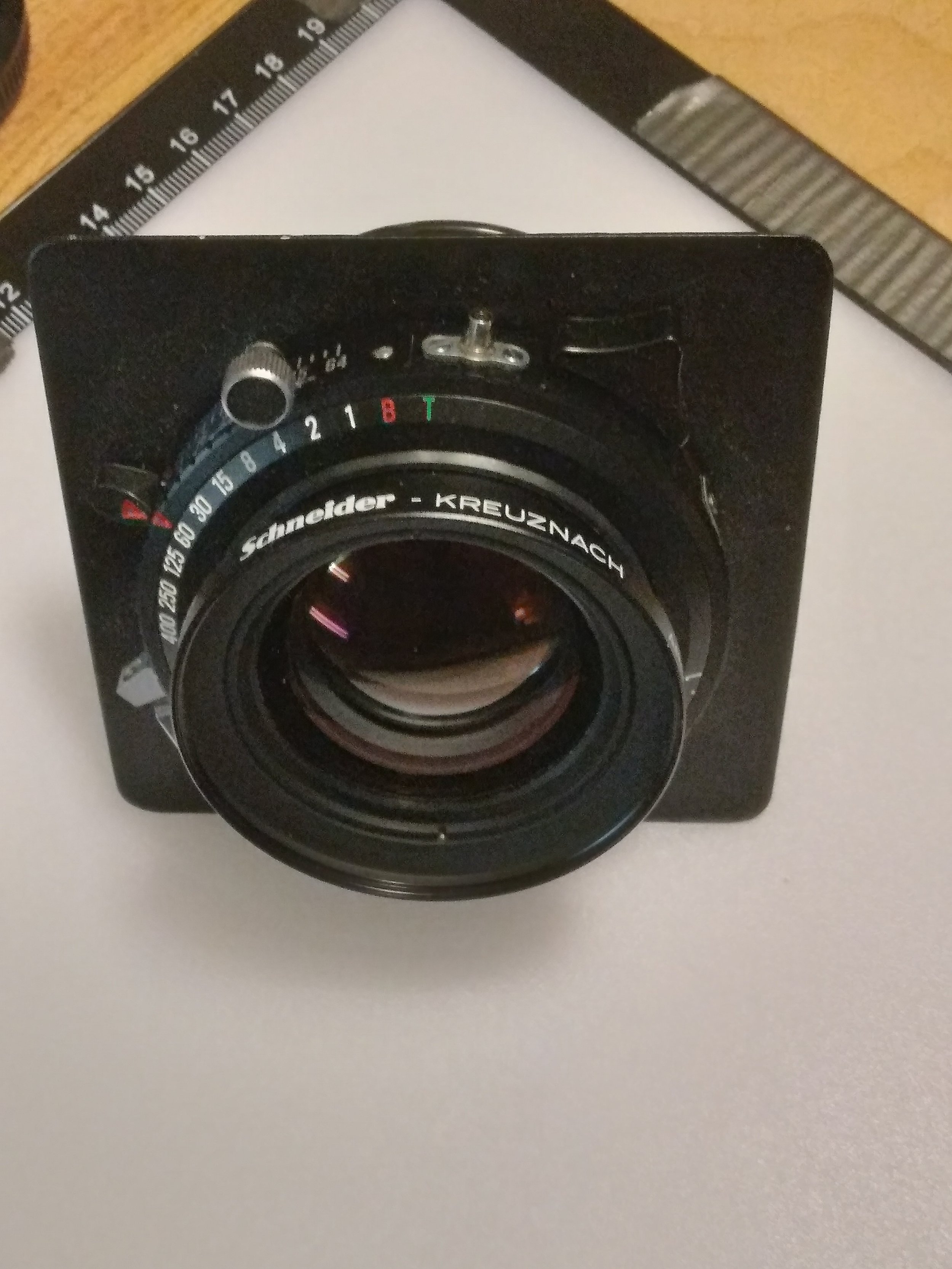How do “old” lenses compare to “new” lenses?
I’ve ended up with two slightly long lenses for my Super Graphic 4x5 camera. One is a Kodak 170mm/f6.3 Anastigmat. This came off of a 122 size camera which took postcard size 3-1/4”x5-1/2” negatives, so it gives perfect coverage for 4x5.
The lens design is a Dialyte, which is pretty rare and unusual. It has four elements in four groups. The design is capable of producing a large image circle in a very small, relatively fast lens. It was used for various wide angle lenses. This sample is uncoated, as one would expect for any pre-WWII lens. One would expect that it should not be a very good lens.

Kodak Anastigmat 170mm/f6.3. It is difficult to determine the exact age of Pre-WWII Kodak lenses, but from the mechanical and stylistic design it likely predates 1930. So this lens is close to 100 years old.

The Ilex shutter is a dial set with a 1/300 second top speed. This was a top of the line shutter in its time. Whether the demented clown face was intentional is an interesting question to ponder.
The second lens is a Schneider APO-Symmar 180mm/f5.6 made in 1991. It is a top of the line lens capable of produces images of remarkable sharpness and resolution.
With nearly a century of technology between them, there should be no comparison between images from each of the two lenses. But the “old” lens made a very good showing of itself, with good sharpness the whole way into the corners. So the results were quite surprising.

Schneider 180mm/f5.6 APO-Symmar. This lens was NIB looks like is has never been used.

The lens is set in a Copal shutter that matches the quality of the glass.

Kodak Anastigmat 170mm/f6.3. I was surprised at how good this image came out. In fact, when pulling it out of the tank, I double checked that this wasn't the shot with the Symmar.

Schneider 180mm/f5.6 APO-Symmar. At this scale there is still a noticeable sharpness. But both images stack up well against each other.

Kodak Anastigmat 170mm/f6.3. Two sections are examined in detail. The first is the bronze plaque near the center of the image. The second is the building detail near the upper right corner.

Schneider 180mm/f5.6 APO-Symmar. A good test for sharpness and detail.

Kodak Anastigmat 170mm/f6.3. Even at this magnification the writing on the plaque is still legible and the brickwork shows good detail.

Schneider 180mm/f5.6 APO-Symmar. This lens is the hands down winner here. The detail and sharpness is amazing.

Kodak Anastigmat 170mm/f6.3. The lens maintains good corner detail. This stands up well to the newer lens.

Schneider 180mm/f5.6 APO-Symmar. This is just a bit better than the lens that predates it by nearly a century.

Kodak Anastigmat 170mm/f6.3. This uncoated lens produces very good colors.

Schneider 180mm/f5.6 APO-Symmar. The high-rise provides great details and textures.

Kodak Anastigmat 170mm/f6.3. Three areas are examined in detail.

Schneider 180mm/f5.6 APO-Symmar. Comparing details of a balcony, a window and foliage in the lower left corner.

Kodak Anastigmat 170mm/f6.3. The balusters are all visible, albeit a bit fuzzy.

Schneider 180mm/f5.6 APO-Symmar. The railing is pretty sharp.

Kodak Anastigmat 170mm/f6.3. My intention was not to be a peeping tom.

Schneider 180mm/f5.6 APO-Symmar. Even the contours of the pillows are clear.

Kodak Anastigmat 170mm/f6.3. Even the extreme corner renders quite good, with essentially no vingetting.

Schneider 180mm/f5.6 APO-Symmar. The detail of this leaf is just amazing.
